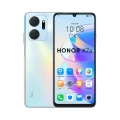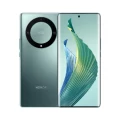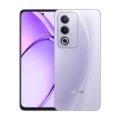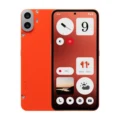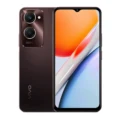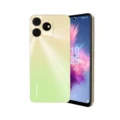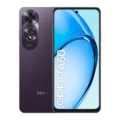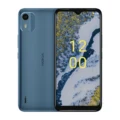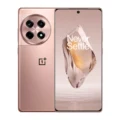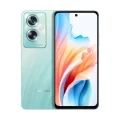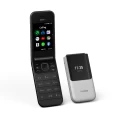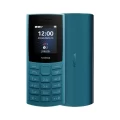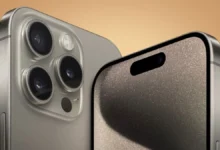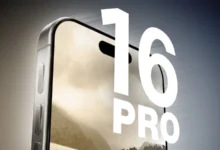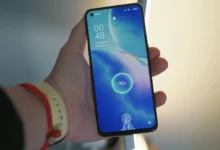Honor Magic V2


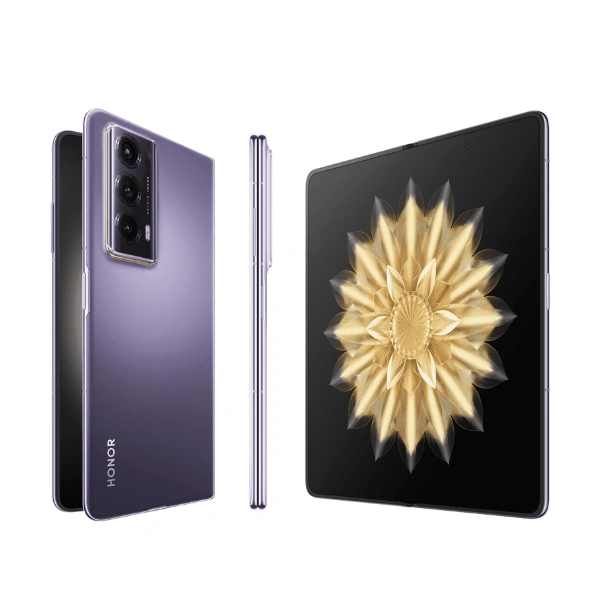
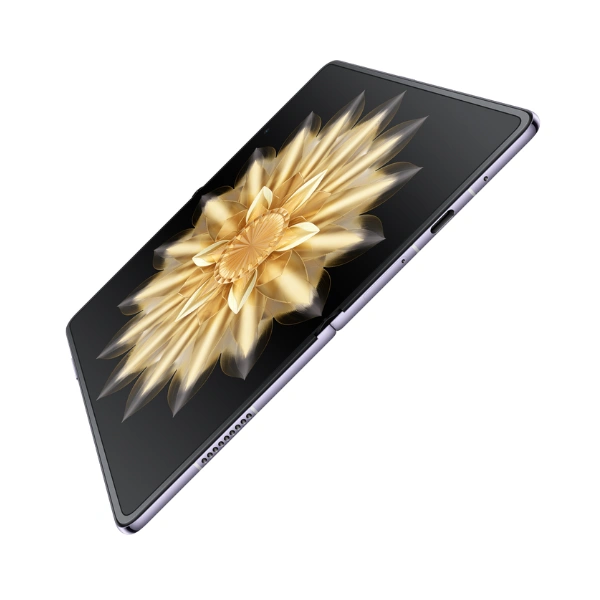
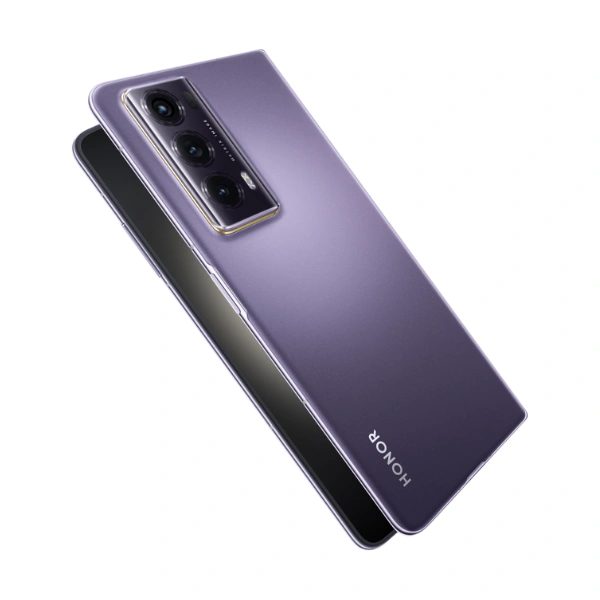
-
Display: 7.92 inches (20.12 cm)
-
CPU: Qualcomm Snapdragon 8 Gen 2
-
RAM: 16 GB
-
ROM: 256GB/512GB/1TB
-
Camera: 50MP + 50MP + 20MP | 16MP
-
Battery: 5000 mAh
Prices
-
Honor Magic V2 Price in United States 16GB+512GB $1,199.99
View Offer -
Honor Magic V2 Price in United Kingdom 16GB+512GB £1,199.99
View Offer -
Honor Magic V2 Price in Saudi Arabia 16GB+512GB SAR 5,999.00
View Offer -
Honor Magic V2 Price in Bangladesh 16GB+512GB ৳1,89,999 (Official)
View Offer -
Honor Magic V2 Price in Canada 16GB+512GB $1,699.00
View Offer
Specifications
General
| Name | Honor Magic V2 |
| Brand | Honor |
| Model | Magic V2 |
| Announced | 12 July, 2023 |
| Release Date | 27 July, 2023 |
| Manufacturer Manufacturer Company: A manufacturer is a company engaged in the production of products. | Honor |
| Made in Made in: Made in is a label or indication on a product that specifies the country where the product was manufactured or produced. | China |
Display
| Display Type | OLED |
| Screen Size |
Inner screen: 7.92 inches (20.11 cm) External screen: 6.43 inches (16.33 cm) |
| Resolution |
Inner screen: 2344x2156 Pixels External screen: 2376x1060 Pixels |
| Aspect Ratio |
Inner screen: 9.78:9 External screen: 20:9 |
| Pixel Density Pixel Density: Pixels per inch and pixels per centimetre are measurements of the pixel density of an electronic image device, such as a computer monitor or television display, or image digitizing device such as a camera or image scanner. | 402 ppi |
| Refresh Rate | 120 Hz |
| Multitouch Multitouch: Smartphone multitouch is a technology that allows the screen to recognize and respond to multiple touch points simultaneously. It enables users to perform gestures like pinch-to-zoom, rotation, and swiping with multiple fingers, enhancing the overall interactivity and usability of the device. | |
| Color Depth Color Depth: Color depth or colour depth, also known as bit depth, is either the number of bits used to indicate the color of a single pixel, or the number of bits used for each color component of a single pixel. When referring to a pixel, the concept can be defined as bits per pixel. | 1.07 billion colors (8-bit) |
| Bezel-less Display Bezel-less display: A bezel-less display minimizes or eliminates the non-display areas around the screen, providing a sleek, immersive look and maximizing the visual experience. | Yes, with punch-hole display |
| Touch Screen Touch Screen: Touch screens provide an intuitive and versatile interface, enabling multi-touch gestures such as swiping, pinching, and tapping. | Yes, Capacitive Touchscreen |
| Brightness |
Inner screen: 1600 nits External screen: 2500 nits |
| Screen Protection Screen Protection: Display protection refers to the various technologies and materials used to safeguard a smartphone's screen from damage such as scratches, cracks, and impacts. | Yes, Nanocrystal glass 2.0 |
| Screen to Body Ratio Screen-to-body ratio: Percentage of a device's front surface occupied by the display, indicating how efficiently the space is used for the screen. Higher ratios mean more immersive displays. | 90.4% (claimed by the brand) |
Design
| Height | 156.7 mm |
| Width |
folded: 74.0 mm unfolded: 145.4 mm |
| Thickness |
PU Version: folded: 9.9 mm unfolded: 4.7 mm Glass Version: folded: 10.1 mm unfolded: 4.8 mm |
| Weight |
PU Version: 231g Glass Version: 237g |
| Material Built Material: The physical construction materials of a smartphone, influence its durability, weight, and aesthetic qualities. Common materials include metal, glass, plastic, ceramic, etc. | Glass front, glass back or eco leather back, magnesium alloy frame, titanium alloy folding mechanism |
| Colors | Black, Gold, Silk Purple, Silk Black |
Camera
| Rear Camera | Triple |
| Resolution |
50 MP f/1.9, Wide Angle, Primary Camera 50 MP f/2.0, Ultra-Wide Angle Camera 20 MP f/2.4, Telephoto Camera |
| Autofocus | Yes, Phase detection autofocus, Laser autofocus |
| OIS Optical Image Stabilization (OIS): OIS in smartphones is a technology designed to reduce the blurriness of photos and videos caused by hand movements or vibrations. It works by physically adjusting the camera lens or sensor to compensate for these movements. | Yes |
| Rear Flash | Yes, LED Flash |
| Image Resolution |
Rear: 8150 x 6150 Pixels Front: 4608×3456 pixels |
| Settings | Exposure compensation, ISO control |
| Shooting Modes |
Continuous Shooting High Dynamic Range mode (HDR) |
| Camera Features | 40x Digital Zoom, Auto Flash, Face detection, Touch to focus |
| Video Capture |
3840x2160 @ 30 fps 1920x1080 @ 30 fps |
| Others Features | Yes, EIS Stabilization Mode |
| Front Camera | Single |
| Camera Type | Punch-hole camera |
| Resolution | 16 MP f/2.2, Wide Angle, Primary Camera |
| Video Capture |
3840x2160 @ 30 fps 1920x1080 @ 30 fps |
Battery
| Capacity Battery Capacity: Battery capacity in smartphones refers to the amount of energy a battery can store, typically measured in milliampere-hours (mAh). It indicates how long a battery can power the device before needing a recharge. | 5000 mAh |
| Battery Type | Li-Polymer |
| Removable Removable Battery: A removable battery in a smartphone is a battery that users can easily take out and replace without tools. Removable batteries were more common in older models; modern smartphones favor non-removable batteries for sleeker designs and better water resistance. | |
| Fast Charging | Yes, 66W SuperCharge |
Performance
| Chipset Chipset: In smartphones, the chipset is like the device's brain, controlling everything from processing tasks to managing connectivity. It includes the CPU, GPU, modem, and other components, determining the device's performance and capabilities. Different smartphones use different chipsets made by companies like Qualcomm or MediaTek. | Qualcomm Snapdragon 8 Gen 2 |
| CPU CPU (Central Processing Unit): The CPU, commonly known as the processor, is responsible for processing instructions to perform various functions that enable a device to operate properly. Often described as the brain of computers, smartphones, and tablets, the CPU plays a crucial role in executing tasks and running applications on these devices. Smartphones and tablets rely heavily on their processors to carry out every task, from running apps to managing system operations. Therefore, the processor is an incredibly important factor to consider when selecting any type of computing device, including smartphones. | Octa-core (3.36 GHz, Single core, Cortex X3 + 2.8 GHz, Quad core, Cortex A715 + 2 GHz, Tri core, Cortex A510) |
| Architecture Instruction Set Architectures (ISAs): In the context of smartphones, "architecture" refers to the design and structure of the processor, which determines how it processes information and executes instructions. This encompasses the processor's instruction set, memory management, and overall design principles. One common term related to architecture is "64-bit architecture," which has significant implications for performance and capabilities. | 64 bit |
| Fabrication Semiconductor Fabrication: Fabrication in the context of semiconductors and microprocessors refers to the process of manufacturing integrated circuits (ICs) or chips. This involves creating the physical structures of a chip, such as transistors and other electronic components, on a silicon wafer. The term "fabrication" is often used interchangeably with "process node" or "technology node," which indicates the manufacturing technology used to create these chips. | 4 nm |
| GPU GPU (Graphics Processing Unit): The GPU in a smartphone is a specialized processor designed to handle the rendering of images, animations, and video, as well as other tasks involving graphics and visual data. It works alongside the CPU (Central Processing Unit) to deliver a smooth and visually rich experience. | Adreno 740 |
| RAM Random Access Memory (RAM): RAM is a type of computer memory that is used to store data temporarily while a device is in use. RAM is a critical component in smartphones, enabling fast access to data, smooth multitasking, and efficient operation of applications. The amount and type of RAM can significantly impact the performance and user experience of a smartphone. | 16 GB |
| RAM Type | LPDDR4x |
| User Interface User interface (UI): A custom user interface (UI) is a layer of software that manufacturers often develop on top of the base operating system to differentiate their devices, enhance user experience, and add unique features. Custom UIs provide additional functionalities, themes, and design elements that are not present in the stock OS. | MagicOS 7.2 |
| Operating System Operating System (OS): The operating system is the core software that manages all the hardware and software resources on a smartphone. It provides a platform for running applications and controls basic functions such as managing memory, processing tasks, and handling input/output operations. | Android 13 |
Storage
| ROM ROM (Read-Only Memory): In the context of smartphones and other electronic devices, ROM typically refers to the built-in storage where the operating system, system files, and pre-installed apps are stored. | 256GB / 512GB / 1TB |
| MicroSD Card MicroSD Card Slot: A microSD card is a small, portable storage device used to expand the storage capacity of electronic devices, including smartphones, tablets, digital cameras, and more. It's inserted into a device's MicroSD card slot to store extra photos, videos, music, and other data. | No |
| Expandable Storage | No |
| Storage Type Storage Type: In smartphones, storage types typically include built-in eMMC or UFS (Universal Flash Storage) for internal storage, and expandable storage options like MicroSD cards. | UFS 3.1 |
Network
| Number of SIM | Dual SIM, GSM+GSM |
| SIM Size | Nano |
| SIM Slot Type | Dual nano SIM Slots |
| Network Support | 2G, 3G, 4G, 5G |
| Network Speed | HSPA, LTE-A, 5G |
| Technology | GSM / CDMA / HSPA / CDMA2000 / LTE / 5G |
| VoLTE VoLTE (Voice over LTE): VoLTE is a technology that allows voice calls to be made over a 4G LTE network, rather than the traditional 2G or 3G networks. In summary, VoLTE enhances call quality and functionality by using the 4G LTE network for voice communications. | |
| 2G Bands 2G (Second Generation): 2G is a wireless technology standard for mobile telecommunications that was introduced in the 1990s and enabled the transmission of digital voice and data services, using digital transmission instead of analog. It has slower data speeds compared to later generations like 3G and 4G. | GSM 1800 / 1900 / 850 / 900 MHz |
| 3G Bands | UMTS 1900 / 2100 / 850 / 900 MHz |
| 4G Bands |
TD-LTE 2600(band 38) / 2300(band 40) / 2500(band 41) / 2100(band 34) / 1900(band 39) FD-LTE 2100(band 1) / 1800(band 3) / 2600(band 7) / 900(band 8) / 700(band 28) / 1900(band 2) / 1700(band 4) / 850(band 5) / 700(band 17) / 850(band 18) / 850(band 19) / 800(band 20) / 850(band 26) |
| 5G Bands |
FDD N1 / N3 / N5 / N8 / N28 TDD N41 / N77 / N78 |
| GPRS GPRS (General Packet Radio Service): General Packet Radio Service is a packet-oriented mobile data standard on 2G and 3G cellular communication networks' global system for mobile communications (GSM). In summary, GPRS is a mobile data service that enhances the data capabilities of 2G and 3G networks, providing basic internet and multimedia services. | |
| EDGE EDGE (Enhanced Data rates for GSM Evolution): Enhanced Data rates for GSM Evolution is a technology used to improve the data transmission rates of 2G GSM networks. In summary, EDGE boosts the data transmission capabilities of 2G networks, providing faster speeds and improved performance for mobile internet access. |
Connectivity
| Wi-Fi Wi-Fi: Wi-Fi is a wireless networking technology that allows electronic devices to connect to a local area network (LAN) wirelessly, typically using the 2.4 gigahertz (GHz) or 5 GHz radio frequency bands. | Yes, Wi-Fi 6 (802.11 a/b/g/n/ac/ax) 5GHz |
| Wi-Fi Features | Mobile Hotspot |
| Bluetooth | Yes, Bluetooth v5.3 |
| GPS GPS (Global Positioning System): GPS originally Navstar GPS, is a satellite-based radio navigation system. It is a satellite-based radio navigation system, GPS permits users to determine their position, velocity, and the time 24 hours a day, in all weather, anywhere in the world, In order to locate your position, your device or GPS receiver must have a clear view of the sky. | Yes with A-GPS, Glonass |
| NFC NFC (Near Field Communication): NFC is a wireless technology that enables devices like smartphones and payment terminals to communicate when they're close together, facilitating contactless transactions and data transfer. | Yes |
| OTG OTG (On-The-Go): The full form of OTG is On-The-Go . OTG is a USB (Universal Serial Bus) standard that allows USB devices to be connected. Without using a computer connection, USB OTG items can connect. You can connect your mobile phone or tablet to various gadgets using a USB OTG link. | Supported |
| Browser Browser: A browser is a software application used to access and view information on the World Wide Web. It allows users to navigate through websites, view web pages, and interact with various online content such as text, images, videos, and other multimedia resources. | HTML5 |
| IR Blaster Infrared (IR) blaster: Some smartphones may come with an infrared (IR) blaster, which allows your smartphone to act as a universal remote control for controlling other devices, such as TVs, set-top boxes, and home appliances, that use infrared technology for communication. | Available |
| USB Interface | USB Type-C 3.1, Display Port 1.2, Mass storage device, USB charging |
Sensors
| Fingerprint Fingerprint: A fingerprint, in the context of smartphones and other devices, refers to a biometric authentication method that uses the unique patterns on a person's fingertip to verify their identity. | |
| Fingerprint Position | Side-mounted fingerprint scanner |
| Fingerprint Type | Ultrasonic fingerprint sensor |
| Face Unlock Facial Recognition: Face Unlock is a biometric authentication feature found in many smartphones. It uses facial recognition technology to identify and authenticate users, allowing them to unlock their devices simply by looking at the front-facing camera. |
Multimedia
| FM Radio | |
| Loudspeaker | Yes |
| Earphone Jack | USB Type-C |
| Audio Features | DTS:X Ultra |
| Stereo Speakers Stereo Speakers: Stereo speakers are two speakers built into a single device. They are usually positioned on the left and right side of the device and each speaker uses the respective channel of stereo sound, thus producing a stereo effect. | Available |
| Voice Recorder | Supported |
| Video Playback |
3GP, MP4 |
| Audio Playback | MP3, MP4, 3GP, OGG, AMR, AAC, FLAC, WAV, MIDI |
| Ringtone Formats | MP3 |
| Video Formats | MP4 |
| Image Formats | JPEG, BMP, WebP, PNG, GIF, etc. |
The Magic V2 is a flagship smartphone for Honor that was released in July 2023. This phone is packed with features. In this review, we’ll dive into its design, display, camera capabilities, battery life, performance, price, and more to help you decide if it’s the right choice for you. So, Let’s begin.
Honor Magic V2 Details
Design and Display
The Magic V2 has a sleek and stylish design. It’s made of Glass front, glass back or eco-leather back, magnesium alloy frame, titanium alloy folding mechanism. The phone has a 6.7-inch foldable display with a 7.92-inch unfoldable display with a 120Hz refresh rate. The display is sharp and vibrant, and it’s great for watching videos or playing games.
Performance and Battery Life
The Honor Magic V2 is powered by the Snapdragon 8 Gen 2 chipset, which is one of the fastest processors on the market. The phone also has 16GB of RAM and 256GB/512GB/1TB of storage. This combination of hardware ensures that the phone can handle even the most demanding tasks. It has a 5000mAh battery and comes with a 66W Supercharger, which is enough to power the phone for a full day of use.
Camera capabilities
The Honor Magic V2 has a triple-camera system on the back, consisting of a 50-megapixel main sensor, a 50-megapixel ultrawide sensor, and a 20-megapixel telephoto sensor. The phone also has a 16-megapixel front-facing camera. The cameras on the Magic V2 take great photos, even in low-light conditions.
Network and Connectivity
The Honor Magic V2 supports 5G connectivity, so you can enjoy fast data speeds. The phone also has Wi-Fi 6, Bluetooth 5.3, and NFC.
Sensors and Multimedia
The Honor Magic V2 has a fingerprint sensor built into the side of the phone. It also has a face unlock feature. The phone has a stereo speaker system, and it supports Dolby Atmos audio.
Pros and Cons
When you’re looking to buy a new smartphone, it’s important to consider both the pros and cons of each device. This helps you make an informed decision and choose a phone that meets your specific needs and preferences.
Pros
- Sharp and vibrant display
- Lightweight and compact design
- Powerful performance
- Long battery life
- Great camera system
- 5G connectivity
- Dolby Atmos audio
Cons
- Expensive
- No expandable storage
- No headphone jack
- No water resistance
Verdict
The Honor Magic V2 is a great choice for anyone looking for a powerful and versatile foldable smartphone. It has a sleek design, a sharp display, and a powerful processor. The cameras are also great, and the phone has a long battery life. However, it is expensive, and it lacks expandable storage and a 3.5mm headphone jack.
Thanks for reading till the end. If you have any questions, please leave a comment below. And if you liked this review, please share it with your friends and family members.
Reviews
Disclaimer Note
The information on this page may not be entirely accurate or up-to-date. Product prices are approximate and may vary based on taxes, import duties, and other factors.
